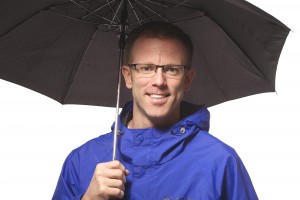Typical June Weather To Continue
Looking ahead this week, the weather will be about what one would come to expect for June. Temperatures will bounce around average with highs in the 60’s and lower 70’s for the most part. No signs of any hot weather coming anytime soon. Morning clouds followed by afternoon clearing will be the rule this week. Along about mid-week a trough of low pressure will slide down over the Pacific Northwest which will increase the chance of showers at the coast and interior valley especially on Thursday. No model at this point is showing a major washout. The jet stream this time of the year is just not strong enough to do much damage rain wise. Models are hinting that Father’s Day weekend will bring more sunshine and less clouds, but there is still plenty of time to update that forecast. That pesky trough of low pressure will be hanging just off the coast. Any shift in the position of that low could make or break a nice Father’s Day weekend forecast. Either way, make sure and get those dads something special for Father’s Day. Longer range models are beginning to hint at the possibility of a significant heat wave near the end of June, but that is a LONG ways out right now. Let’s focus on the next 5-7 days. That much we know for sure. Have a great week!
Stay tuned!
Steve Pierce, President
Oregon Chapter of the American Meteorological Society (AMS)
Don’t forget — you can get my latest weather and climate updates via Facebook. Send me a friend request at http://facebook.com/stevepiercevancouver and I will add you in. Don’t forget to also bookmark this blog at http://blogs.columbian.com/weather. Are you an amateur simply interested in weather? Maybe you are a professional meteorologist? Why not join the single largest chapter of the American Meteorological Society (AMS) in the country with 180 fellow members? The Oregon chapter hosts eight monthly meetings from September through June. All of these meetings are free and open to the public. We are always looking for new members. Dues are just $10 a year! For Oregon AMS meeting details and a membership application, please see http://ametsoc.org/chapters/oregon

